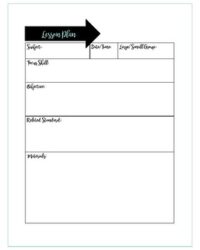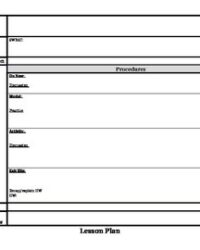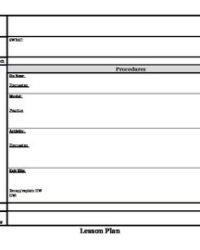Navigating the world of education means constantly seeking innovative ways to engage students and ensure deep understanding. Teachers are always on the lookout for strategies that not only deliver content effectively but also empower learners to become independent thinkers. It’s a delicate balance between direct instruction and allowing students the space to explore and master concepts on their own.
This continuous pursuit of effective pedagogy often leads educators to frameworks that provide a clear roadmap for learning. One such highly respected and widely adopted model is the Gradual Release of Responsibility, developed by Douglas Fisher and Nancy Frey. This approach isn’t just a theory; it’s a practical guide for structuring lessons, and understanding how a dedicated fisher and frey lesson plan template can transform your teaching practice is key.
Understanding the Core of the Fisher and Frey Model
The heart of the Fisher and Frey framework lies in the Gradual Release of Responsibility (GRR), a dynamic instructional model designed to support students as they move from dependence to independence. This model ensures that learning is scaffolded, meaning teachers provide significant support initially, then slowly diminish that support as students gain proficiency. It is a systematic process that guides students through new concepts and skills with increasing levels of autonomy. Rather than simply presenting information, GRR encourages teachers to actively model, guide, and facilitate collaborative learning, ultimately preparing students to apply what they’ve learned on their own.
“I Do It” – Focused Instruction
This is where the teacher takes center stage. In this phase, the educator explicitly models the skill or concept, demonstrating exactly what students are expected to do. Think alouds are crucial here, as the teacher vocalizes their thought processes, strategies, and problem-solving steps. It is about making the invisible visible for students, providing a clear demonstration of the desired outcome and the pathway to achieve it. This phase sets the foundation for understanding and is essential for introducing complex material.
“We Do It” – Guided Instruction
Once the concept has been modeled, the teacher and students work together. This phase involves interactive instruction where the teacher continues to support students as they begin to practice the new skill. It could involve asking probing questions, providing corrective feedback in real time, or working through examples collaboratively. This is a safe space for students to try things out, make mistakes, and receive immediate guidance, ensuring they are on the right track before moving to more independent practice. It helps solidify understanding and addresses misconceptions early on.
“You Do It Together” – Collaborative Learning
In this stage, students work with their peers to apply the learned skills. This often takes the form of small group work or partner activities, where students can discuss, problem-solve, and teach each other. The teacher circulates, offering support and clarification as needed, but the primary interaction is among students. This phase fosters critical thinking, communication, and the ability to articulate understanding, building confidence and deepening comprehension through peer interaction and shared responsibility.
“You Do It Alone” – Independent Practice
Finally, students are ready to demonstrate their mastery independently. This phase allows students to apply the skill or concept without direct teacher or peer support. It is the ultimate measure of whether the learning has been successfully transferred. Activities might include individual assignments, projects, or assessments. The purpose here is to confirm that students can successfully complete the task autonomously, consolidating their learning and preparing them for future, more complex challenges. This final stage is crucial for building self-efficacy and long-term retention.
Benefits of Utilizing a Fisher and Frey Lesson Plan Template
Embracing a fisher and frey lesson plan template offers a multitude of advantages for both educators and students, streamlining the planning process while significantly enhancing the learning experience. For teachers, it provides a clear, structured framework that ensures all necessary instructional components are included, moving beyond just content delivery to a holistic approach to skill acquisition. This systematic design helps in anticipating student needs and preparing appropriate scaffolding for diverse learners.
The template’s inherent structure, mirroring the Gradual Release of Responsibility, ensures that students receive the right amount of support at the right time. This deliberate progression from teacher-led modeling to independent application prevents cognitive overload and builds confidence incrementally. It helps students understand the learning objective and the steps required to achieve it, fostering a sense of agency and reducing frustration.
Furthermore, integrating this framework into your planning encourages thoughtful differentiation. As you design each phase, you naturally consider how to adjust your instruction for students who need more support or those who are ready for advanced challenges. A well-designed template based on Fisher and Frey’s principles helps teachers consistently:
- Clarify learning objectives for themselves and their students.
- Systematically scaffold instruction, preventing gaps in understanding.
- Promote student independence through structured practice.
- Encourage active engagement at every stage of the lesson.
- Provide clear opportunities for formative assessment, allowing for real-time adjustments.
Ultimately, by embracing a structured planning tool like a fisher and frey lesson plan template, educators can create dynamic, student-centered lessons that not only impart knowledge but also cultivate essential skills for lifelong learning. It transforms the classroom into an environment where every student feels supported and challenged to achieve their full potential. The consistency and clarity offered by this approach lay a strong foundation for academic success, making complex concepts accessible and empowering students to take ownership of their education.


